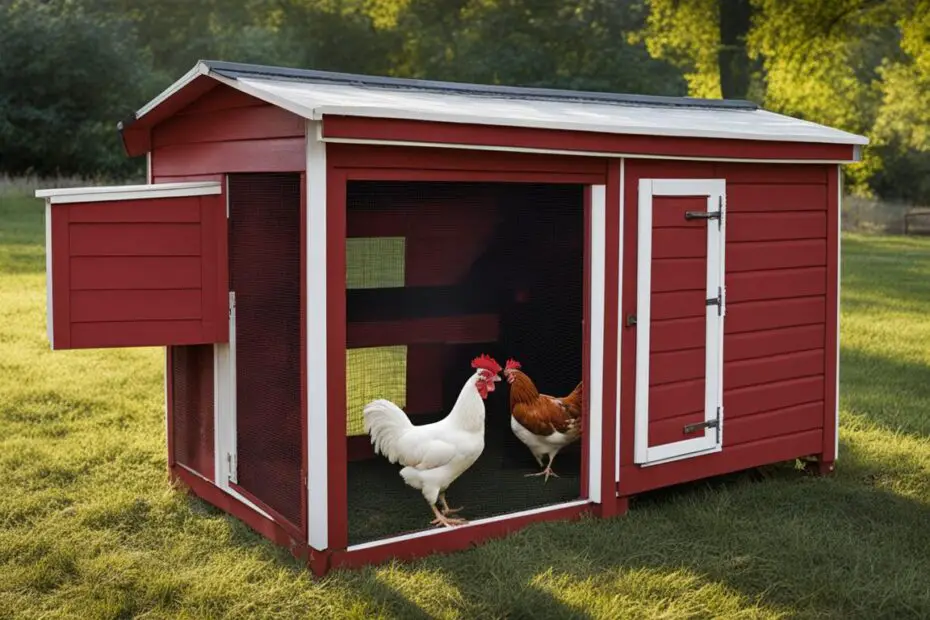Feathers are not just a beautiful adornment for birds; they serve essential functions in their lives. The molting process allows birds to replace old, worn-out feathers and grow new ones, ensuring their ability to fly, stay warm, and attract mates. However, feather loss can also be a sign of mite infestation, a common problem that affects birds, reptiles, and even insects. In this article, we will delve into the differences between molting and mite infestation, explore their respective processes, and discuss treatment and prevention methods.
Key Takeaways:
- Molting is a natural process that allows birds, reptiles, and insects to replace old feathers, skin, or exoskeletons and promote growth.
- Mite infestation can lead to feather or skin damage, itching, and overall health problems in pets.
- It is important to recognize the signs of molting and mite infestation to provide appropriate care and treatment.
- Treatment options for mite infestation include specialized sprays, powders, or soaks, while molting primarily requires a supportive environment.
- Proper pet care, regular monitoring, and maintaining clean habitats are crucial in preventing mite infestations and supporting the molting process.
Understanding Molting in Birds
Molting is a natural process that birds undergo to replace old or damaged feathers and allow for the growth of new plumage. It is triggered by hormonal changes and typically occurs during the fall. During molting, birds shed feathers, primarily on the head, neck, and wings, which can temporarily leave them appearing bald in these areas. This shedding is a normal part of the molting process and should not cause concern for bird owners.
While molting is a natural occurrence, it is important to differentiate between molting and mite infestation. Feather mites, for example, can cause feather damage and lead to bald patches on the bird’s body. Signs of mite infestation include excessive scratching, abnormal feather loss, and overall poor health. If these signs are present, it is necessary to seek veterinary attention to properly identify and treat the issue.
In summary, molting is a normal physiological process in birds that allows for the growth of new feathers. It is essential for bird owners to be aware of the signs of molting, such as feather shedding, and distinguish them from potential mite infestations. Regular observation and veterinary care can help ensure the overall health and well-being of birds.
Understanding Mite Infestation in Birds
Mite infestations in birds can be detrimental to their health and well-being. These tiny parasites, such as feather mites and feather lice, can cause feather loss, itching, and discomfort. Feather mites and lice often gather around the bird’s head, making it difficult for the bird to reach and groom that area. As a result, they can chew on feathers, leading to breakage and loss.
To address mite infestations in birds, specialized bird sprays or powders are commonly used. These treatments are designed to kill and remove mites from the bird’s feathers and skin. It’s important to follow the instructions provided with these products to ensure their safe and effective use.
Prevention is also key in controlling mite infestations in birds. Regularly cleaning and disinfecting the bird’s environment can help minimize the risk of mites taking hold. Paying close attention to the bird’s living conditions, such as providing clean bedding and ensuring a well-ventilated space, can also help prevent mite infestations.
| Mite Infestation in Birds | Treatment Options | Preventive Measures |
|---|---|---|
| Feather loss, itching, and discomfort | Specialized bird sprays or powders | Regular cleaning and disinfection |
| Gathering of mites around the head | Follow instructions for safe use | Providing clean bedding |
| Feather damage and breakage | Ensuring a well-ventilated space |
By understanding mite infestations in birds and taking appropriate measures for treatment and prevention, pet owners can help keep their feathered friends healthy and comfortable. Regular monitoring and timely intervention can make a significant difference in addressing mite infestations and ensuring the overall well-being of birds.
Understanding Molting in Reptiles
Molting is a natural process that not only occurs in birds but also in reptiles. Reptiles shed their skin and scales to allow for growth and to remove any damaged or unhealthy skin. This shedding process is essential for their overall health and growth. The frequency of molting can vary among reptile species, with some shedding their skin several times a year and others shedding less frequently.
During molting, reptiles may exhibit certain signs that indicate they are in the molting process. These signs can include changes in coloration, dry and flaky skin, and increased activity levels. It is important for reptile owners to closely observe their pets during this time and provide the necessary support to ensure a successful molt.
To better understand the molting process in reptiles, let’s take a look at the table below:
Reptile Species Molting Frequency Signs of Molting Bearded Dragon Every 4-6 weeks Changes in coloration, flaky skin Ball Python Approximately every 2 months Cloudy eyes, decreased appetite Gecko Every 4-8 weeks Loss of appetite, increased hiding
As seen in the table, different reptile species have varying molting frequencies and exhibit specific signs during the process. It is important for reptile owners to be aware of these signs and provide the necessary care and support to their pets during molting.
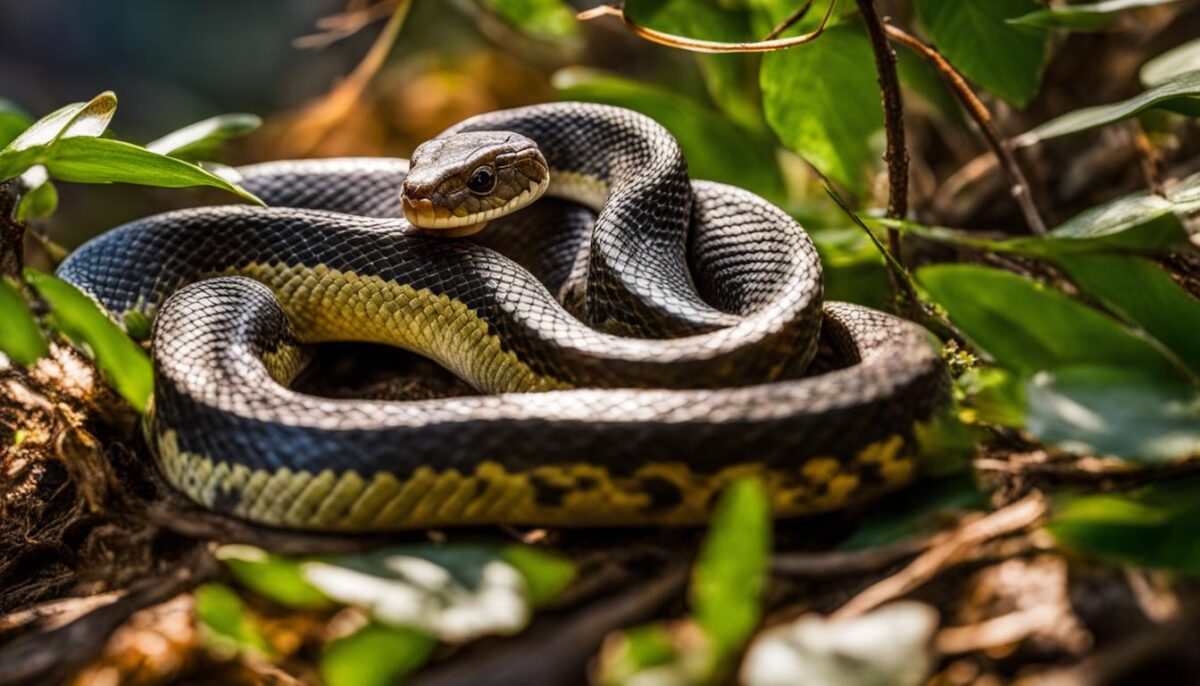
Understanding Mite Infestation in Reptiles
Mite infestations can be a common problem in reptiles, causing skin irritation, itching, and discomfort. Reptile mites are tiny parasites that feed on the blood of reptiles, and if left untreated, they can cause serious damage to the reptile’s skin and scales. It is important for reptile owners to be aware of the signs of mite infestation and take necessary steps for treatment and prevention.
Signs of Mite Infestation in Reptiles
- Excessive scratching and rubbing against objects
- Red, irritated skin
- Presence of small, dark-colored dots on the reptile’s skin
- Visible mites crawling on the reptile’s body
If you notice any of these signs in your reptile, it is crucial to take immediate action to eliminate the mites and prevent further infestation. Ignoring the problem can lead to severe health issues for your reptile.
Treatment and Prevention of Mite Infestation in Reptiles
To treat mite infestations, there are specialized reptile sprays or soaks available that are designed to kill mites and their eggs. It is important to follow the instructions provided by the manufacturer and administer the treatment properly. Additionally, thoroughly clean and disinfect the reptile’s enclosure to remove any remaining mites or eggs.
Prevention is equally important to avoid future mite infestations. Maintain a clean and hygienic environment for your reptile, regularly cleaning and disinfecting their enclosure. Inspect new reptiles before introducing them to your existing collection to ensure they are free from mites. Lastly, quarantine any new reptiles for a period of time to prevent the spread of mites to your other reptiles.
| Mite Infestation Prevention Tips | Mite Infestation Treatment |
|---|---|
|
|
By being proactive in preventing mite infestations and taking immediate action when signs of infestation arise, you can ensure the health and well-being of your reptile. Regularly monitor your reptile’s skin and behavior to detect any early signs of mite infestation, and provide them with the necessary treatment and care to keep them happy and healthy.
Understanding Molting in Insects
Insects, like many other animals, undergo a process called molting or ecdysis to grow and develop. Molting is a crucial part of their life cycle and plays a significant role in their growth and survival. During molting, insects shed their old exoskeleton or outer covering and replace it with a new and larger one that allows for further growth. This process enables insects to accommodate their increasing size and development as they progress through their life stages.
Molting in insects occurs at regular intervals and is often triggered by hormonal changes within the insect’s body. The frequency of molting can vary significantly depending on the species of insect and its developmental stage. For example, some insects may molt multiple times, while others may molt less frequently. The process of molting can take anywhere from a few hours to several days, during which the insect remains vulnerable and may seek shelter to protect itself.
As insects molt, they shed not only their exoskeleton but also any accumulated dirt, parasites, or damaged body parts. This renewal allows the insect to grow and develop new body structures, such as wings, legs, or reproductive organs. Molting also enables insects to repair any damaged or injured body parts and ensures the overall health and longevity of the insect. It is a remarkable biological process that contributes to the diversity and success of insects as a group.
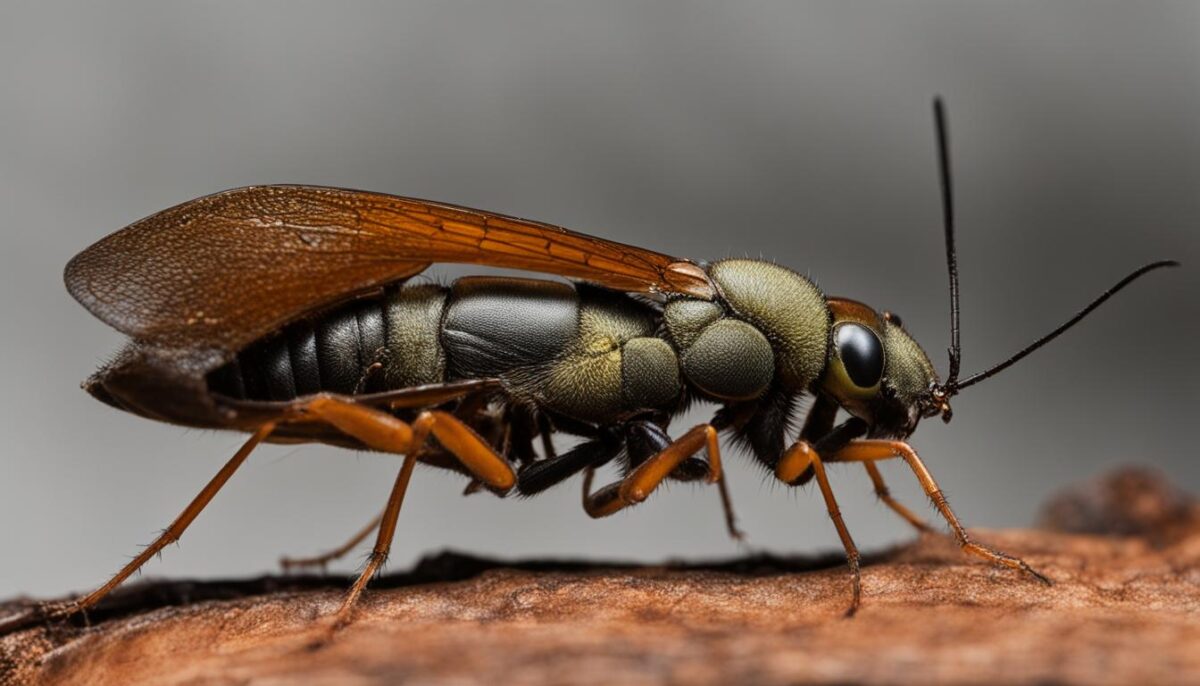
Table: Comparison of Molting in Different Insect Orders
| Insect Order | Molting Frequency | Molting Duration | Notable Changes |
|---|---|---|---|
| Lepidoptera (Butterflies and Moths) | Multiple times during larval stage; once during pupal stage | Varies based on species and stage | Growth of wings, change in color and pattern |
| Hymenoptera (Bees, Wasps, and Ants) | Multiple times during larval stage | Varies based on species and stage | Growth of wings, development of stingers and social roles |
| Coleoptera (Beetles) | Several times during larval and pupal stages | Varies based on species and stage | Growth of wings, hardening of elytra (wing covers) |
| Orthoptera (Grasshoppers and Crickets) | Multiple times during nymphal stage | Varies based on species and stage | Growth of wings, change in body size and color |
Table: A comparison of molting in different insect orders, showcasing the frequency of molting, duration, and notable changes during the process. The table highlights how molting varies among insect orders and provides insight into the specific changes that occur in each order during molting.
Understanding Mite Infestation in Insects
Mites can infest various types of insects, including ants, bees, and beetles. These tiny parasites can have detrimental effects on the overall health and well-being of the insects they infest. Understanding mite infestation in insects is crucial for implementing appropriate treatment and prevention measures to protect the affected insects and their colonies.
When insects become infested with mites, it can lead to reduced reproductive capabilities and weakened immune systems. Mites can also cause physical damage to the insects’ bodies, affecting their ability to forage for food and carry out their essential tasks within their colonies or habitats. Therefore, it is important to recognize the signs of mite infestation in insects to take prompt action.
Treatment options for mite infestations in insects typically involve the use of insecticides that are specifically designed to target and eliminate mites. Proper management practices, such as regular monitoring and inspections, can also help prevent mite infestations from occurring or spreading. Maintaining a clean and hygienic environment for the insects, as well as implementing proper hygiene practices, can go a long way in minimizing the risk of mite infestations.
Table: Common Signs of Mite Infestation in Insects
| Insect Type | Signs of Mite Infestation |
|---|---|
| Ants | – Visible presence of mites on the bodies of ants – Abnormal behavior or movement patterns of ants in the colony – Decreased overall activity of the ant colony |
| Bees | – Weakened or dying bee colonies – Increased susceptibility to diseases – Decreased honey production |
| Beetles | – Physical damage to beetle bodies, such as holes or deformations – Decreased mobility and activity of beetles – Reduced reproduction rates |
By understanding mite infestation in insects and taking appropriate measures, such as treatment with insecticides and proper habitat management, it is possible to reduce the negative impact of mites on insect populations. This can help support the overall health and well-being of the affected insects and maintain the balance within their ecosystems.
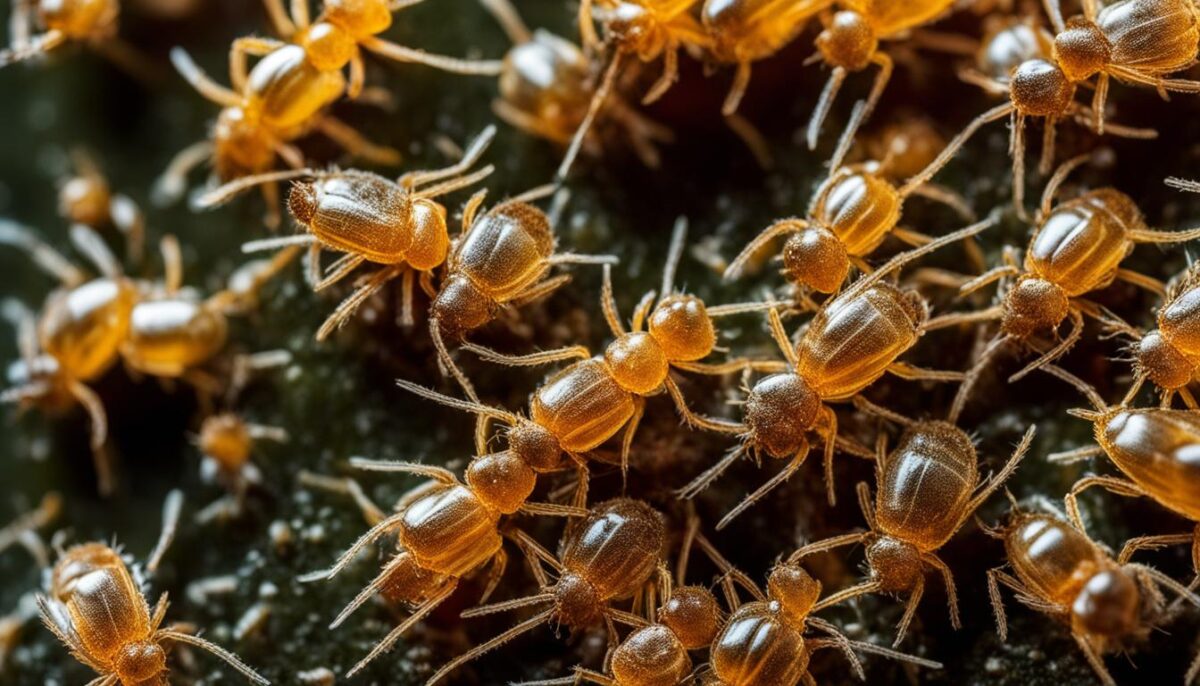
Signs and Effects of Molting vs Mite Infestation
Understanding the difference between molting and mite infestation is crucial for pet owners to properly address any issues their pets may be experiencing. By recognizing the signs and effects of molting and mite infestation, pet owners can take appropriate measures to ensure the health and well-being of their pets.
Signs of Molting
Molting is a natural process that birds, reptiles, and insects go through to replace old feathers, skin, or exoskeletons with new ones. The signs of molting vary depending on the type of pet:
- In birds: Shedding of feathers, appearance of bald patches, decrease in egg-laying activity.
- In reptiles: Shedding of skin and scales.
- In insects: Shedding of exoskeleton.
These signs of molting are normal and necessary for the growth and development of the pet.
Signs of Mite Infestation
Mite infestation can cause various problems for pets and may have similar signs to molting. However, there are some key differences to look out for:
- In birds, reptiles, and insects: Itching, feather or scale damage, decreased overall health.
If any of these signs are observed, it is important to further investigate the possibility of a mite infestation and take appropriate action.
Effects of Molting vs Mite Infestation
The effects of molting and mite infestation have distinct impacts on the pet’s health:
- Effects of molting: Molting is a natural process and does not typically have negative health effects, as it is necessary for growth and development.
- Effects of mite infestation: Mite infestation can cause discomfort, skin irritation, and overall health deterioration if left untreated. It is important to address mite infestations promptly to prevent further damage.
By understanding the signs and effects of molting and mite infestation, pet owners can take appropriate steps to support their pets’ health and well-being.
| Molting | Mite Infestation | |
|---|---|---|
| Process | Natural process for growth and development | Presence of mites causing discomfort and health issues |
| Signs | Shedding of feathers, skin, or exoskeletons | Itching, feather or scale damage, decreased health |
| Effects | No negative health effects | Discomfort, skin irritation, overall health deterioration |
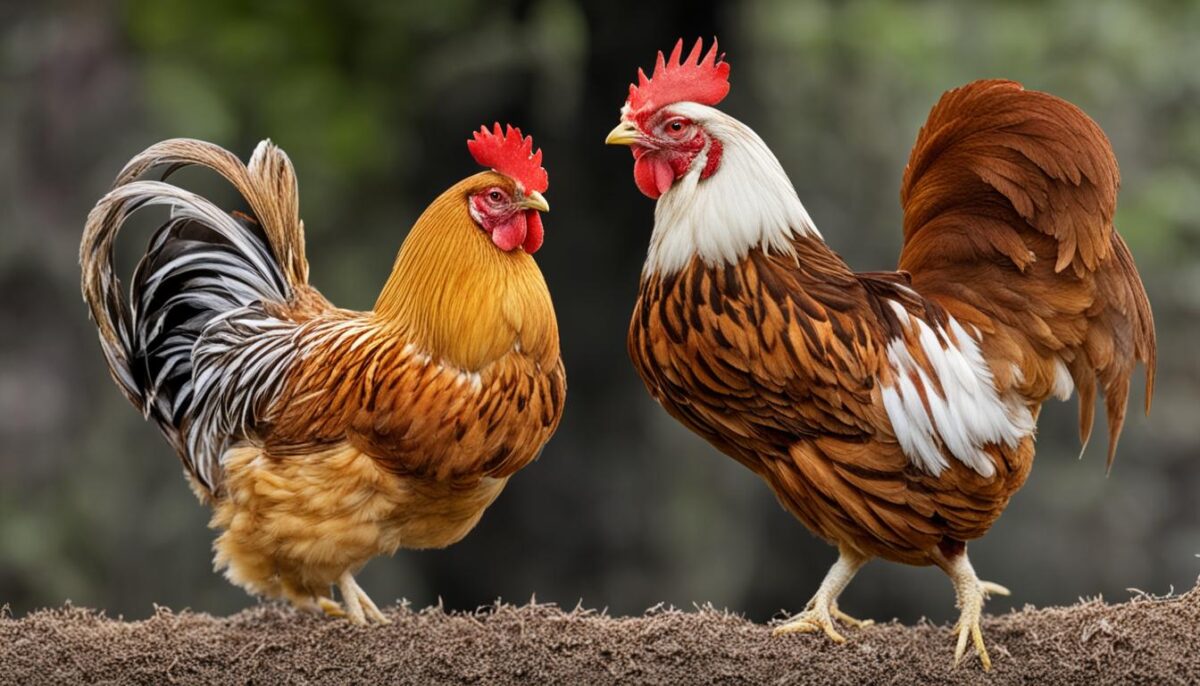
Treatment and Control of Molting vs Mite Infestation
When it comes to addressing molting and mite infestations in birds, reptiles, and insects, different approaches are required. Understanding the specific needs and characteristics of each species is crucial for effective treatment and control. Here are some key considerations to keep in mind:
Treatment for Molting
Molting is a natural process that requires minimal intervention. To support the molting process, providing a balanced diet rich in protein and vitamins is essential. This helps ensure healthy feather or skin growth. Creating a comfortable environment by maintaining appropriate temperature and humidity levels, along with offering appropriate hiding spots or nesting materials, can also help reduce stress during molting.
Treatment for Mite Infestation
Mite infestations require targeted treatment to eliminate the parasites and prevent further damage. Specialized sprays, powders, or soaks that are specifically designed for birds, reptiles, or insects can be used to kill and control mites. It is important to follow the instructions provided by the manufacturer and consult with a veterinarian or specialist if needed.
Mite Prevention and Habitat Management
Preventing mite infestations is crucial for maintaining the health and well-being of your pets. Regular cleaning and disinfection of habitats, including cages, terrariums, or enclosures, can help eliminate mites and their eggs. Ensuring proper ventilation and maintaining appropriate humidity levels can also contribute to creating an environment that is less conducive to mite infestations.
Additionally, monitoring your pets regularly for signs of mites, such as itching, feather or scale damage, or a decrease in overall health, can help detect infestations early on. If you suspect a mite infestation, it is important to take immediate action to prevent further damage and seek advice from a veterinarian or specialist who can recommend appropriate treatment options.
By providing the necessary care, treatment, and preventive measures, you can help your pets navigate through the molting process smoothly and prevent mite infestations, ensuring their overall health and well-being.
| Treatment Approach | Molting | Mite Infestation |
|---|---|---|
| Natural Process | Allow molting to occur naturally | – |
| Diet | Provide a balanced diet rich in protein and vitamins | – |
| Environment | Maintain appropriate temperature, humidity levels, and offer hiding spots or nesting materials | Maintain clean habitats, regular cleaning and disinfection, proper ventilation |
| Treatment Options | – | Specialized sprays, powders, or soaks |
| Preventive Measures | – | Regular cleaning and disinfection, monitoring for signs of infestation |
Importance of Proper Pet Care and Monitoring
Proper care and monitoring of pets, whether they are birds, reptiles, or insects, are essential for ensuring their optimal health and well-being. By implementing effective pet care practices, pet owners can prevent and address issues related to molting and mite infestations. Regular inspections and observation of pets for signs of molting or mite infestations are crucial in early detection and intervention.
Creating a clean and comfortable environment for pets is a fundamental aspect of pet care. Regular cleaning and disinfecting of the pet’s habitat can help prevent mite infestations and promote overall health. Additionally, providing a balanced diet rich in essential nutrients, such as protein and vitamins, supports healthy feather or skin growth during the molting process.
Monitoring a pet’s health and behavior is equally important. Pet owners should pay attention to any unusual signs such as itching, feather or scale damage, or a decrease in overall health. Seeking professional advice or consulting a veterinarian is recommended if there are concerns about a pet’s health. They can provide proper diagnosis, treatment, and guidance for maintaining the well-being of the pet.
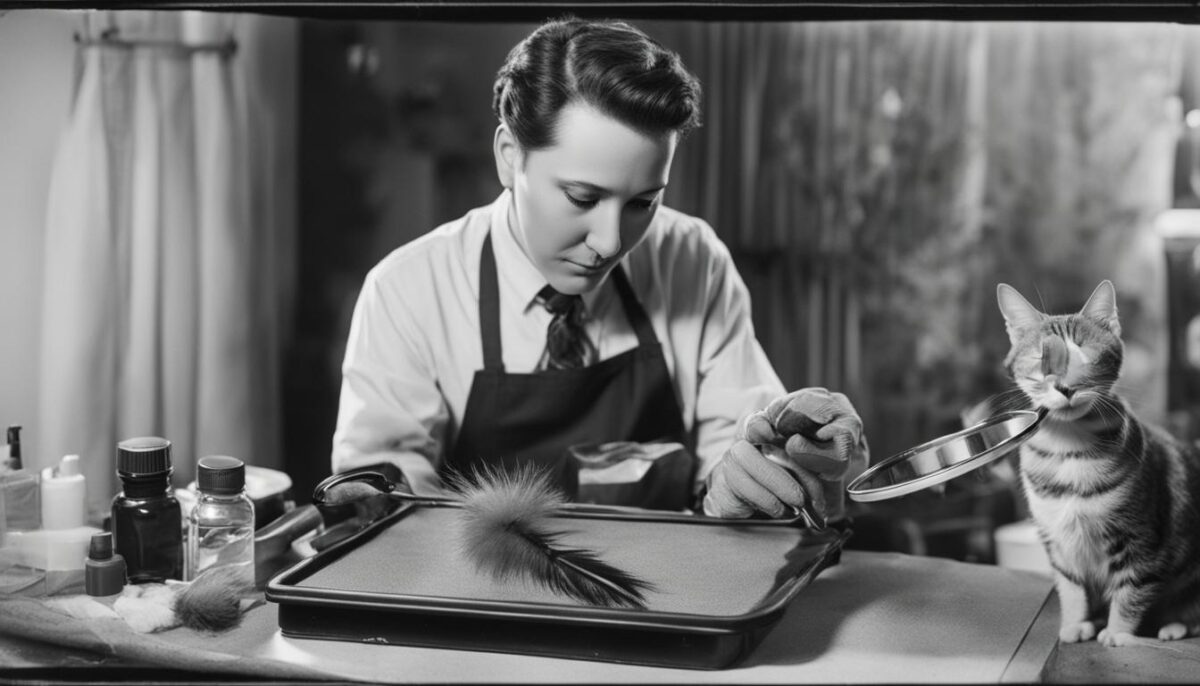
Caring for Birds
When caring for birds, it is important to provide a spacious cage or aviary that allows for natural movements and exercise. Regularly cleaning the cage and providing fresh food and water are essential. Additionally, bird owners should provide appropriate perches, toys, and bathing opportunities to support the molting process and prevent mite infestations.
Caring for Reptiles
Reptiles require specific environmental conditions to thrive. It is crucial to maintain suitable temperature and humidity levels to support their health. Regularly cleaning the reptile’s enclosure, providing proper UVB lighting, and ensuring a balanced diet are essential for promoting molting and preventing mite infestations.
Caring for Insects
For insect pets, a carefully designed habitat is vital. Providing suitable hiding spots, nutritious food, and maintaining optimal temperature and humidity levels are essential for their well-being. Regular observation and monitoring of their behavior and molting patterns can help identify any potential issues or infestations.
| Molting | Mite Infestation | |
|---|---|---|
| Signs |
|
|
| Treatment |
|
|
Tips for Pet Owners: Supporting Molting and Preventing Mite Infestations
As a pet owner, it is essential to understand how to support your pets during the molting process and prevent mite infestations. Here are some valuable tips to help you take care of your feathered, scaly, or insect companions:
1. Provide a Nutritious Diet:
During molting, birds, reptiles, and insects require a diet rich in protein and vitamins to support healthy feather growth or skin shedding. Consult with a veterinarian or do research to determine the specific dietary needs of your pet. Additionally, ensure that fresh water is readily available at all times to keep your pet hydrated.
2. Maintain a Clean Habitat:
Cleanliness plays a crucial role in preventing mite infestations. Regularly clean and disinfect your pet’s housing, including cages or terrariums, to minimize the risk of mites and other pests. Pay extra attention to corners, crevices, and bedding materials, as mites can thrive in these areas. Use pet-safe cleaning products and follow the instructions carefully.
3. Create a Stress-Free Environment:
Reducing stress levels can promote healthy molting and prevent mite infestations. Ensure that the temperature and humidity levels in your pet’s habitat are appropriate for their species. Provide suitable hiding spots or nesting materials to offer a sense of security. Additionally, avoid sudden changes in routine or exposure to loud noises, as these factors can stress your pets and disrupt their molting process.
By following these pet care tips and providing proper support and prevention measures, you can help your pets undergo a smooth molting process and reduce the risk of mite infestations. Remember to consult with a veterinarian if you have any concerns or questions regarding the health and well-being of your pets.
Conclusion
Understanding the differences between molting and mite infestations is crucial for pet owners to ensure the health and well-being of their beloved companions. By being able to recognize the signs and symptoms, pet owners can take appropriate action to address any issues their pets may be experiencing.
Regular monitoring of your pet’s feathers, skin, or exoskeleton is essential in identifying whether they are going through a natural molting process or if there is a mite infestation. This awareness allows for prompt treatment if needed, ensuring the comfort and overall health of your pet.
Furthermore, providing proper care, such as a balanced diet and a clean environment, is vital in supporting pets during the molting process and preventing mite infestations. Maintaining optimal temperature and humidity levels, as well as offering appropriate hiding spots or nesting materials, can create a stress-free environment for your pets.
By prioritizing pet health and implementing preventive measures, pet owners can foster a happy and thriving environment for their feathered, scaly, or insect friends. Remember, understanding pet health is key to providing the best care possible for your beloved pets.
FAQ
What is molting?
Molting is a natural process that birds, reptiles, and insects go through to replace old feathers, skin, or exoskeleton and allow for growth and development.
What are the signs of molting in birds?
Signs of molting in birds include the shedding of feathers, especially on the head, neck, and wings, and a decrease in egg-laying activity.
What are the signs of mite infestation in birds?
Signs of mite infestation in birds can include itching, feather or scale damage, and a decrease in overall health.
How do you treat mite infestations in birds?
Treatment options for mite infestations in birds include specialized sprays or powders designed to kill and prevent mites. Regular cleaning and disinfecting of the bird’s environment can also help prevent infestations.
What is molting in reptiles?
Molting in reptiles is the shedding of skin and scales to allow for growth and to remove any damaged or unhealthy skin.
What are the signs of molting in reptiles?
Signs of molting in reptiles include the shedding of skin and scales.
How do you treat mite infestations in reptiles?
Treatment options for mite infestations in reptiles include specialized sprays or soaks designed to kill and prevent mites. Proper habitat maintenance and hygiene are also important in preventing infestations.
What is molting in insects?
Molting in insects is the process of shedding the old exoskeleton and replacing it with a new one to allow for growth and development.
What are the signs of molting in insects?
Signs of molting in insects include the shedding of the old exoskeleton and the appearance of a new, larger exoskeleton.
How do you treat mite infestations in insects?
Treatment options for mite infestations in insects include insecticides and proper management practices to prevent the spread of mites and further damage.
How can I support the molting process in my pet?
You can support the molting process in your pet by providing a balanced and nutritious diet, maintaining proper temperature and humidity levels, and creating a stress-free environment.
How can I prevent mite infestations in my pet?
You can prevent mite infestations in your pet by regularly cleaning and disinfecting their habitat, implementing proper hygiene practices, and seeking professional advice or consulting a veterinarian.


